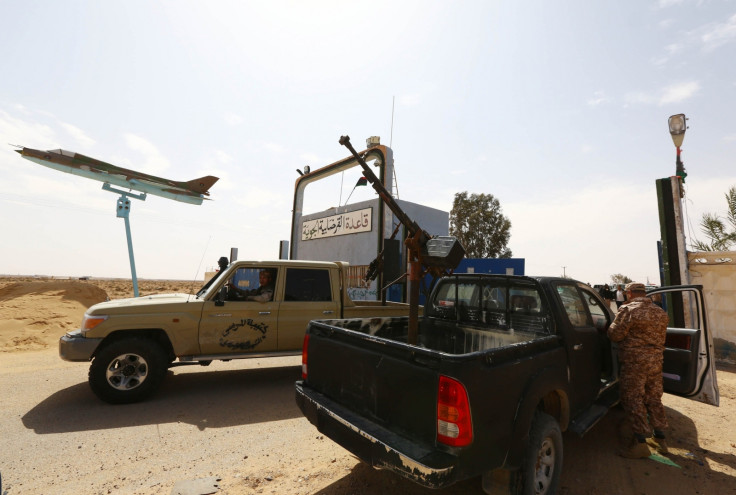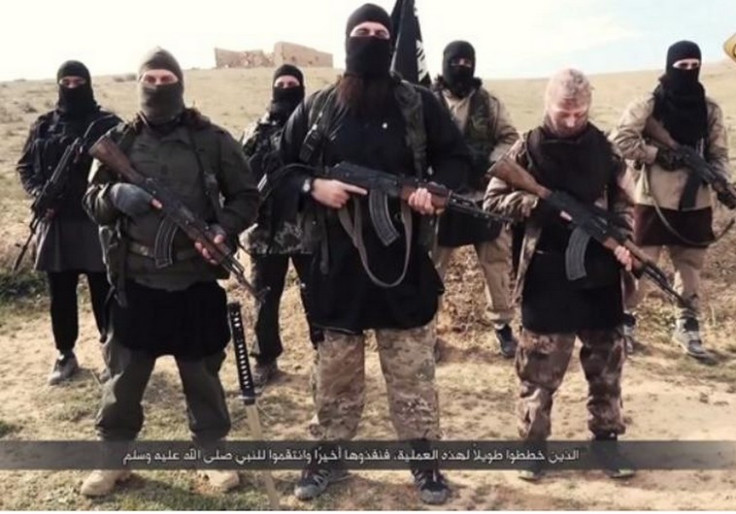Isis: Interactive timeline shows how Islamic State spread across the Middle East

It has been little under a year since Abu Bakr al-Baghdadi took to the podium at a Mosul mosque for his first Friday sermon, giving the world its first glimpse of the leader of the Islamic State just weeks after the terrorist group had stormed out of the desert and seized Iraq's second city.
The lightening strike on Mosul took the world by surprise when IS fighters easily routed the Iraqi army troops and took control of the city in June 10, 2014. Three weeks later, al-Baghdadi declared the creation of a caliphate in Iraq and Syria with himself as leader. That caliphate now controls as much as 50% of Syria and swathes of Iraq. It has been a bloody 12 months.
The spread of IS and its ideology began soon after al-Baghdadi's speech in Mosul, as jihadi groups from across the Middle East and Africa switched their allegiance from al-Qaeda to IS. One year later, and despite an American-led air campaign to wipe it out, the Sunni extremist group has an operational presence in 10 countries, its eye on several others and a wide recruiting network, as well as a reputation for unparalleled brutality.
"ISIS is the crack cocaine of violent extremism, all of the elements that make it so alluring and addictive purified into a crystallized form," Jessica Stein and J.M. Berger wrote in "ISIS: State Of Terror."
IS supporters may by now span the globe, but the group only has official provinces, or "wilayat," in places where it can directly exert control.
The expansion of the so-called caliphate happens according to a clear procedure. Each current and future wilāyah has its own a strategic purpose for the group, whose stated goal is widespread domination according to the strictest interpretation of Shariah, or Islamic law. The application process is complicated and long. Several groups that pledged allegiance to Baghdadi in the early months of the caliphate have yet to be acknowledged as provinces.
"The policy of the Islamic State is known," according to IS online magazine Dabiq. "It does not give any person or group permission to announce a wilāyah or present themselves as officials representing the Islamic State leadership until the aforementioned process has concluded."
The group might lose cities, even hugely important ones such as Mosul or, one day, Raqqa, but its wilayat will likely remain and then try to expand once more
Before announcing their allegiance to Isis, extremist groups that aspire to lead a wilāyah must have a unified leadership, a strong base of fighters and be the dominant jihadi group in the area. Each hopeful "state" must agree on who will take on a leadership role.
Last November, Baghdadi surfaced again, this time in an audio recording released by the official Isis media house. He accepted the allegiance of the first wilāyah outside of Iraq and Syria, announcing the expansion of the so-called caliphate to Yemen, Saudi Arabia, Algeria, Libya and Egypt's Sinai Peninsula. In January, Isis created Wilāyah Khorasan, which spans parts of Pakistan and Afghanistan.
"In some ways the announcement was the debut of the first ISIS affiliates," Berger and Stein wrote. "But more accurately it appeared to be an expansion of the proto-state itself beyond contiguous borders."
Once the groundwork has been done, the next step to getting Baghdadi's acceptance is to publicly declare allegiance in a way that can be documented and shared. Some groups, like Algeria's Jund al-Khilafa, chose to prove their loyalty by making a brutal IS-style execution video. Others, like the Shura Youth Council in Libya -- which controls the city of Derna -- held pro-IS rallies in the streets.
The rallies were videotaped and photographed so they could be distributed over various social media platforms.

The underlying goal is for Baghdadi to be recognised as the leader who can restore the Muslim world to the perceived glories of the past.
"It is necessary that bayah (allegiance) becomes so common to the average Muslim that he considers those holding back as grossly abnormal," according to the second issue of Isis magazine Dabiq. "This effort, God willing, will encourage Islamic groups to abandon their partisanship and also announce their bayah to the Khalifa Ibrahim [Baghdadi.]"
The IS wilayat differs from the al Qaeda system used in the past, in which groups would operate alongside al Qaeda's core organisation to help it achieve its goal of attacking the West. An IS wilāyah operates with the reinforcement of Isis leadership and the notoriety of the IS brand to seize territory, conduct attacks, recruit and govern in its home country as part of a mission to solidify the caliphate's expansion.

IS is choosing groups that are already active in conflict zones and helping them to gain power and perhaps territorial control more easily, Harleen Gambhir, counterterrorism analyst at the Institute for the Study of War, recently told International Business Times. "It's more a matter of IS tailoring its strategy within each wilāyah to whatever the regional fight is, to help their affiliates have the most power."
The degree of coordination between IS leadership in Iraq and Syria varies according to Isis' needs and the resources available locally. One "state" may serve to give Isis a foothold in an area where it has been less active, while IS may be able to actually seize and govern territory in another. Isis has claimed to be in direct contact with the wilayat leaders and "is likely funneling strategic resources and military training to its most robust wilayat," according to the Institute for the Study of War.
The first group to become an official IS wilāyah was Ansar Bait al-Maqdis, based in the Sinai Peninsula. After Baghdadi acknowledged its pledge of allegiance, the group's media campaign and propaganda significantly improved, as did the intensity of its attacks on Egyptian security forces, which signals an influx of IS resources to the group.
"The Islamic State has chosen wisely in terms of establishing new provinces or states," according to a report from the Soufan Group. "The group might lose cities, even hugely important ones such as Mosul or, one day, Raqqa, but its wilayat will likely remain and then try to expand once more."
© Copyright IBTimes 2025. All rights reserved.




















